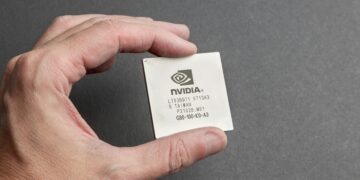FDA Interaction, Upcoming Data, and Strategic Path Forward
Viking Therapeutics (VKTX) continues to make significant strides with its promising candidate VK2735, which is being developed in both subcutaneous (subQ) and oral formulations. Recent interactions with the FDA have included comprehensive data from the VENTURE study, and further details regarding the program’s next steps are anticipated in the upcoming second-quarter update scheduled for late July. The full Phase 2 VENTURE data is expected to be showcased at Obesity Week in November, with particular attention on the pharmacokinetic (PK) profile to evaluate the feasibility of monthly dosing.
Phase 2b or Phase 3? Strategic Considerations for VK2735
There is ongoing deliberation about whether the next phase for subQ VK2735 should be a Phase 2b or Phase 3 trial. The relatively short duration of the VENTURE study and the absence of a weight-loss plateau at week 13 complicate this decision. Each option presents unique advantages: a Phase 2b study, potentially spanning nine months, could include monthly maintenance dosing, while a Phase 3 trial would accelerate the overall development timeline. Both pathways offer distinct strategic benefits, making the decision a critical juncture for VKTX.
Best-in-Class Potential for Oral VK2735
Despite competitive pressures, VKTX is optimistic about the best-in-class potential for its oral VK2735. The Phase 1 dose-escalation study is ongoing, with preliminary qualitative data from the 60mg cohort expected soon. The complete Phase 1 data will also be presented at Obesity Week. The company is on track to initiate a Phase 2 study in the second half of the year, which is expected to reflect the VENTURE study’s design and objectives.
Favorable PK Profile and Scalability
Management has highlighted the potential for weekly maintenance dosing with the oral VK2735, thanks to its favorable PK profile. This development is significant as it addresses key concerns around patient compliance, manufacturing scalability, and cost efficiency. The unique capability of less frequent dosing for both subQ and oral VK2735 could markedly improve patient experience and streamline production processes.
Innovation in Oral Formulation Technology
Although specific details about the oral VK2735 formulation technology remain undisclosed, VKTX has invested substantially in its in-house development. This technology is adaptable to other peptide programs, suggesting a broader application potential. Notably, recent updates on petrelintide and VKTX’s presentation on long-acting amylin agonists at the American Diabetes Association (ADA) meeting have generated interest. The possibility of combining an amylin agonist with VK2735 for enhanced weight loss before transitioning to less frequent maintenance dosing is particularly intriguing.
VK2809: A Strong Contender in NASH Treatment
VKTX’s lead candidate, the THR-β agonist VK2809, shows promise in treating non-alcoholic steatohepatitis (NASH). VK2809’s Phase 2a efficacy results in reducing relative liver fat are comparable to those of Madrigal Pharmaceutical’s resmetirom (MGL-3196). Should the Phase 2b biopsy-confirmed NASH trial yield positive outcomes, VK2809 is likely to advance to Phase 3 development. Given this trajectory, VKTX’s current market capitalization appears undervalued compared to its peers.
Asymmetric Upside Potential
The potential of VK2735, coupled with the promising outlook for VK2809, positions VKTX for significant growth. The innovative advancements in dosing frequency, formulation technology, and strategic development phases underscore VKTX’s potential to lead in the obesity and NASH treatment markets. Investors and stakeholders should closely monitor upcoming updates, as these developments could unlock substantial value and solidify VKTX’s position as a leader in these therapeutic areas.
You might like this article:Nike Upgraded to Outperform: Analyst Sees Rebound Potential










